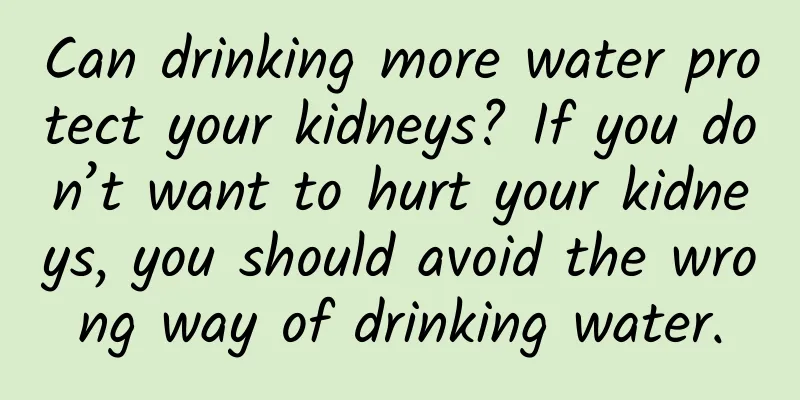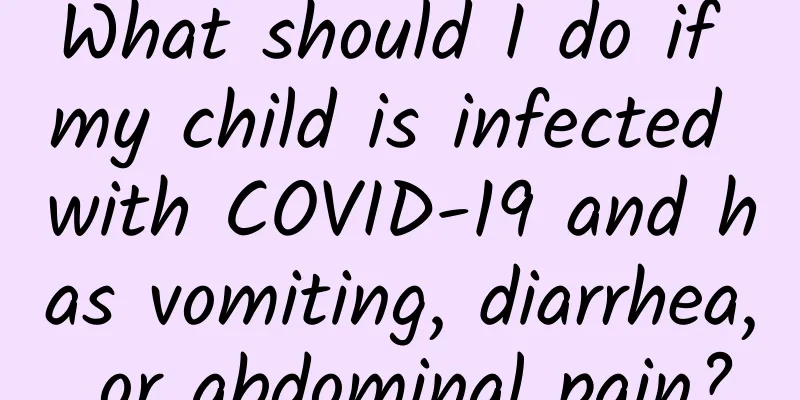Can we still eat oranges washed with “fresh water”? Expert interpretation →

|
Starting from December every year, citrus fruits such as mandarin oranges and oranges gradually mature and are put on the market in large quantities. Citrus fruits are not only nutritious and rich in vitamins, but also juicy and delicious, and are deeply loved by people. Therefore, the market demand has been expanding year by year. In the face of positive changes in the market, higher requirements have been put forward for the transportation and storage of citrus. In order to increase the freshness of citrus, extend the storage period, and facilitate transportation, fruit farmers will use preservatives on citrus. Tuchong Creative However, some people see that citrus fruits are preserved with chemical agents, and they are afraid that eating such fruits will harm their health, so they resist citrus fruits and are afraid of them. So does the use of preservatives in citrus fruits really harm human health? Can people still happily show off citrus fruits? Let's discuss this issue together and give everyone the truth. 01 Citrus fruits are often damaged by diseases after harvest and need to be kept fresh The skin of citrus fruit is relatively thin and tender, and is easily mechanically damaged during picking, packaging, storage and transportation. When the skin of citrus fruit is scarred, various pathogens lurking in the environment will take the opportunity to invade through the wound, causing post-harvest diseases of citrus fruit. More than 20 types of post-harvest diseases of citrus have been found, among which penicillium caused by Penicillium italicum, green mold caused by Penicillium digitatum and white mold caused by Geotrichum citri are more serious. These diseases will cause mold to form on the surface of citrus fruit, causing the whole fruit to rot and become inedible. In addition, after being picked, citrus fruits still carry out life activities and undergo aerobic respiration. When so many citrus fruits are piled together during storage and transportation, they will produce strong respiration, release respiratory heat, and increase the temperature of the surrounding environment, which is more conducive to the growth and reproduction of pathogens. In a warm environment, pathogens will accelerate the infection of fruits and the spread speed will also increase, which will quickly make many healthy fruits infected. Therefore, under such circumstances, if the citrus fruits are not treated, the fruit rot rate is usually around 30%, and even 50% in severe cases, which not only causes huge economic losses to fruit farmers, but also makes it difficult for consumers to enjoy high-quality, inexpensive and healthy citrus fruits. In order to achieve the healthy development of the citrus industry, the industry standard "NY/T 1189-2017 Citrus Storage" issued by the Ministry of Agriculture and Rural Affairs stipulates that citrus fruits should be treated with prescribed preservatives within 24 hours after arriving at the harvesting and processing plant. Therefore, it is reasonable, legal and unquestionable to preserve citrus fruits according to the standards after they are picked. Tuchong Creative 02 Chemical preservatives have outstanding effects Nowadays, there are generally three methods that can be used to prevent and control post-harvest diseases of citrus and maintain the freshness of citrus, namely physical control, biological control and chemical control. Among them, physical prevention generally uses physical technologies such as low temperature treatment, ozone gas fumigation and ultraviolet irradiation to achieve the purpose of fruit preservation and storage by reducing the respiration of fruits and inhibiting the growth and metabolism of pathogens. However, these physical technologies still have certain limitations, such as high energy consumption and even unstable quality of low temperature storage; some physical preservation technologies can also cause damage to fruit cell tissues, decomposition and loss of nutrients such as protein, and other adverse consequences. At the same time, the preparation cost of physical preservation facilities is high, and it is difficult for ordinary fruit farmers to afford it in the long term. As for biological control, this control method uses the activity of a microorganism to make a biological preservative to control the growth and reproduction of another microorganism, so as to achieve the control effect of inhibiting harmful microorganisms. Because it is non-toxic to the environment, it has become a very promising control method. However, this method also has some shortcomings. It is greatly affected by factors such as temperature and pH. The effect of using it alone is not stable. At present, most of them are only in the laboratory stage and are rarely used in actual production. Chemical control, on the other hand, uses chemical agents, such as pesticides and fungicides, to be applied to the surface of the fruit by soaking or spraying, in order to inhibit or kill the growth of pathogenic microorganisms, and ultimately achieve the purpose of preventing and controlling fruit rot. This method only requires the purchase of agents, and the cost of use is very low, which fruit farmers can afford. At the same time, these chemical agents are invented based on the life weaknesses of pathogens. They are simple to use, have strong bactericidal and insecticidal effects, and are not affected by geography and seasonality. They are considered to be the best way to preserve citrus. Therefore, in the actual production of post-harvest disease prevention and control of citrus fruits, chemical control methods are used. Tuchong Creative 03 Chemical preservatives are safe and secure At present, the main chemical control agents for citrus preservation are prochloraz, imazalil, Bacillus subtilis, methyl thiophanate, chlorpyrifos and thiabendazole, all of which have obtained the pesticide registration certification of the Ministry of Agriculture and Rural Affairs. They are all low-toxic and slightly toxic agents and can be used for citrus sterilization and preservation in accordance with regulations. Before registration, these chemical agents must pass strict laboratory tests, field tests, toxicity tests and many other assessments before they can be registered, so from the perspective of the safety of the use of the agents, there is a safety guarantee. At the same time , in order to further ensure the safety of the people's "fruit basket", the state has also issued national standards (GB 2763-2019 "National Food Safety Standard Maximum Limits of Pesticide Residues in Food"), which clearly stipulates that the maximum detection limits of prochloraz, imazalil and 2-4 drops are 5mg/kg, 5mg/kg and 0.1mg/kg respectively. In the process of supervision and law enforcement over the years, the supervision and management departments in various regions of China have not found any citrus pesticide residues exceeding the national limit standards, so China's citrus market is generally safe and healthy . In addition, in the context of modern agriculture, the use of chemical agents has become a mainstream, and many agricultural products contain more or less pesticide residues. However, it is nonsense to talk about toxicity without considering the dosage. The national pesticide residue limit standards are issued after large-scale sampling experiments and calculations, and are scientific and reliable. After low-toxic and slightly toxic preservatives are applied to the surface of citrus fruits and then put on the market after a standard safety interval, the pesticide residues will be very trace. At that time, after consumers buy them, washing them with water or wiping them with paper towels will not affect their lives and health. Therefore, to sum up, as long as citrus practitioners strictly use registered preservatives in accordance with national approval regulations, strictly follow the procedures, use them in a standardized manner, and abide by the safe interval period before putting them on the market, and the pesticide residues meet the national minimum limit standards, citrus soaked in preservatives can be eaten safely without worry. References: [1] Jinyin C, Yuting S, Chuying C, et al. Inhibition of Key Citrus Postharvest Fungal Strains by Plant Extracts In Vitro and In Vivo: A Review[J]. Plants, 2019, 8(2):26. [2] Pan Chunqi. Identification of postharvest diseases of citrus and research on biocontrol agents for its main diseases[D]. Jiangxi Agricultural University, 2022. [3] Rodriguez IF, Sayago JE, Torres S, et al. Control of citrus pathogens by protein extracts from Solanum tuberosum tubers[J]. European journal of plant pathology, 2015, 141(3): 585~595. [4] Zhu Lihua. Postharvest diseases of citrus fruits and their control [J]. World Pesticides, 2005, 27(2): 18~21. [5] Zeng Rong, Li Ping, Chen Jinyin. Natural preservatives and postharvest physiology of fruits and vegetables[J]. Food and Fermentation Industries, 2004, 30(11): 138~142. Author | Li Ting Review | Han Hongwei, Director and Researcher of Risk Communication Department, National Food Safety Risk Assessment Center This article is produced by the "Science Rumor Refutation Platform" (ID: Science_Facts). Please indicate the source when reprinting. The pictures in this article are from the copyright gallery and are not authorized for reproduction. |
Recommend
How to relieve stomach pain during pregnancy
What women worry about most after becoming pregna...
Does the head position mean it is in the pelvis?
As the fetus grows slowly over time during pregna...
Why don't you have pubic hair?
Everyone will have body hair when they reach a ce...
Why do I always have discharge during pregnancy?
After a woman becomes pregnant, her body's ho...
How to eat a MIND diet to prevent Alzheimer's disease?
Today is September 21, World Alzheimer's Day,...
What is the difference between diamond screen protector and tempered screen protector? How to apply tempered screen protector
Tempered glass mobile phone film is a new mobile ...
What should I do if my uterus is cold?
Young girls nowadays have many bad habits. For ex...
Is it useful to close your eyes and rest during lunch break when you can't sleep? What are the reasons for not being able to sleep during lunch break?
The short lunch break is very important for white...
Consequences and precautions of low placenta in four months of pregnancy
Sometimes, pregnant mothers will find that they h...
Silver Age Health | Prevention and Treatment of Venous Thromboembolism in the Elderly
Venous thromboembolism (VTE) is a complex disease...
Why are menstrual cycles getting shorter?
The menstrual cycle is getting shorter and shorte...
Why does eating yellow peel fruit cause diarrhea? Will eating yellow peel fruit increase moisture?
Not only is the kumquat itself nutritious, its pe...
Why is it difficult to have a clean period?
Menstruation, also known as menstruation, when a ...
What are the causes of uterine cavity separation and pelvic effusion?
The uterus is a relatively important part of the ...
What causes lower back pain during menstruation?
Menstruation is something every girl experiences ...









